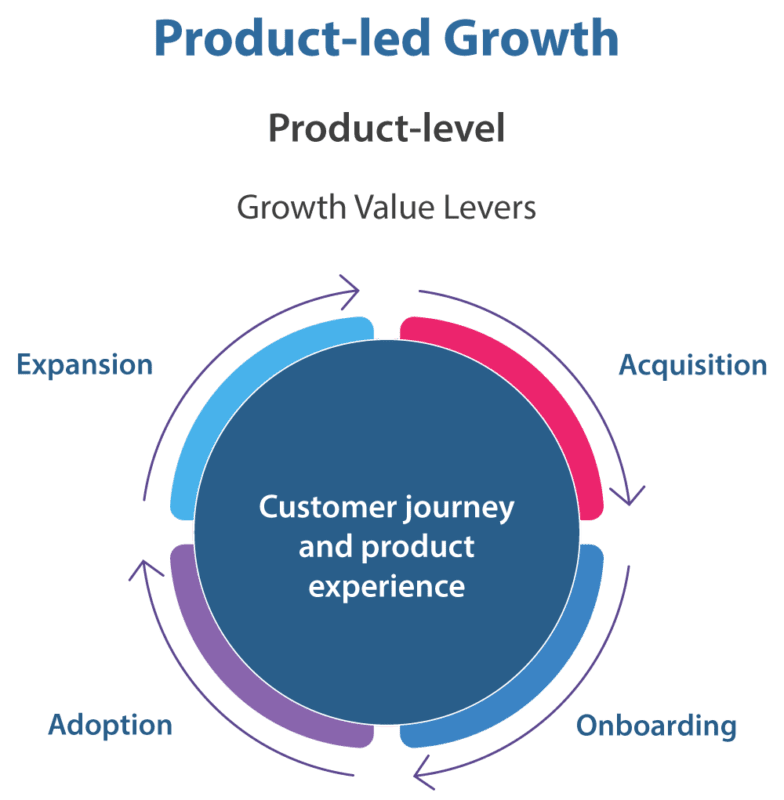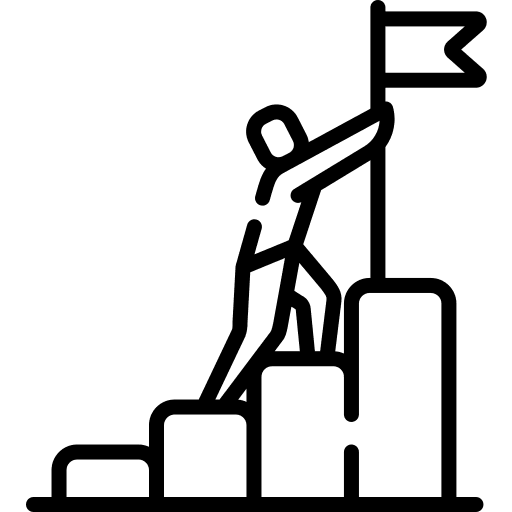Product Led Growth: Multi-Chapter Guide
Product-led Growth (PLG) is a business strategy and go-to-market approach that puts the product at the center of value creation for the company and value delivery to the customer. PLG puts the customer at the center of the product experience, and creates a compelling journey for customers through acquisition, onboarding, adoption, and expansion fueled by the product itself.
At a business level, growth refers to creating value for a company across customer lifecycles, first through customer retention (product-market fit), then broad acquisition, and then scaled revenue.
At a product level, growth refers to delivering value to customers, embedding their journey into the product, and driving deeper, sustained engagement over time.
| Customer Lifecycle Stage | Growth Levers |
|---|---|
| Acquisition | Leverage virality, referral, collaboration, shareable moments |
| Onboarding | Reduce friction for setup and trial, minimize time-to-value |
| Adoption | Drive repeat use, habit formation, engagement, retention |
| Expansion | Self-serve upgrades, organically drive new acquisition |
A company could take a product, sales, or marketing-led approaches to driving different growth ‘levers’ above. The right approach can depend on product category, company maturity, team competencies, and more. This article focuses on how PLG works.
Product-level growth concepts
The sections below expand on PLG product-level growth levers.
Growth levers across the customer journey
At a product level, growth refers to delivering value to customers across their journey and deriving value from customers as they engage with the product. It is a give-and-take that sustains a flywheel. In PLG, the customer journey is embedded into the product experience, and the product is the tip of the spear in driving deeper connections and sustained engagement with customers.

An overview of the product-led growth levers and the customer journey.
PLG takes a data-driven approach to deliver a personalized product experience that meets specific customer needs. This reflects the consumerization of enterprise products, with evolving expectations of users and buyers. Compared to sales or marketing-led programs, PLG accelerates the sales cycle by reducing customer friction to engage with the product and derive value from it. One PLG ethos is “show, don’t tell” – focusing on creating customer “pull” (demand-driven) to engage with the product rather than sales/marketing approaches that tend to “push” the product (supply-driven).
Acquisition
In PLG, acquisition is built directly into the product experience (“the journey starts here”), with a bottoms-up strategy to reduce friction and lower acquisition costs. This often takes the form of online products with trial (limited time) or freemium (limited experience, capacity, seats, support, etc.) models such as Slack, Dropbox, or Asana. Customers may organically ingress via online viral paths, word-of-mouth referrals, shareable moments, and collaborative experiences that reduce customer acquisition costs. Product-led acquisition also helps to reduce sales cycles for more complex enterprise products, and can be used to facilitate faster sales for leads gathered via sales programs.
Acquisition KPIs include:
- Signups
- Trials
- Product Qualified Leads (PQLs)
- Customer acquisition cost (CAC)
Onboarding
Onboarding guides a great first-time product experience, helping customers complete core setup, learn to use it, personalize it, explore it, and evaluate it. Time-to-value (TTV) is used to help customers reach an “Aha!” moment quickly. Product analytics support path/funnel analysis, track conversions, and identify friction points. Through real-time user behavior and account profiles, features can be introduced to users in a contextual, relevant way. Additionally, when the product is used for acquisition, onboarding can begin during a free trial or freemium experience and improve customers’ TTV.
Onboarding KPIs include:
- Funnel conversion
- Time-to-value (TTV)
- Feature activation rate
Adoption
Adoption focuses on driving repeat high-value actions that lead to progressive engagement and downstream retention. Product approaches include contextual in-app UX (e.g., self-help, closed-loop feedback) and out-of-app UX (e.g., emails) based on intent and behavior that drive users to high-value features. Analytics help identify the most important high-value features (“Golden Features”) to guide users to adopt via prescriptive in-app journeys.
Retention is the hallmark of good adoption and product-market fit, and creates long-term value as customers remain loyal. A great product strategy and experience delights customers, delivers unique value, minimizes churn, and shapes repeat use through deep product adoption.
Adoption KPIs include:
- Cohort retention
- User retention rate
- Customer effort score (CES)Stickiness (e.g., DAU, MAU, and WAU)
- Customer satisfaction score (CSAT)
- Net promoter score (NPS)
Expansion
Expansion focuses on increasing customers’ usage to drive renewals, upsells, or cross-sells. Expansion seeks to maximize opportunities to drive upgrades or cross-sell motions via in-app paywalls or messaging, as well as drive new organic acquisition through advocacy programs. Naturally, social or collaborative products can have an inherent advantage in driving efficient and effective expansion.
Expansion KPIs include:
- Customer lifetime value (CLV)
- Net dollar retention (NDR)
- Net revenue retention (NRR)
- Gross renewal rate (GRR)
- Referral rate
- Expansion rate
Product-led growth within the organization
Within the organization, PLG works to create new efficiencies in the buying cycle and build a groundswell of support to influence buyers in an organization. In this way, PLG drives product-qualified leads (PQL) for the sales team to engage directly – focusing their time on high-value conversions.
PLG helps focus strategic growth goals within the company that act as mechanisms for resourcing, ownership, incentives, decisions, and roadmaps. At an organizational level, PLG breaks down team silos to synthesize collaboration and data across functions with engineering, support, sales, marketing, and success.. PLG prompts the organization to rethink how departments communicate and collaborate toward a unified customer experience.
What’s Next
As you embark on your product-led growth journey, it’s essential to have a solid foundation in place.
- Begin by setting up the right analytics tools to measure and optimize your product metrics, ensuring that you have a robust method to track your customer’s journey within the app.
- Establish clear communication channels to reach customers both in-app and out-of-app, and emphasize the importance of user feedback in driving product improvements.
- Consider using cross-functional platforms like Gainsight to streamline your PLG strategy and gain valuable insights into customer behavior and preferences within one place.
Collaboration across departments is crucial for PLG success. Sales and product teams should work closely to establish criteria for product-qualified leads (PQLs) and design a seamless handoff process. Marketing and product teams must collaborate on acquisition strategies, such as targeting the right audience, creating engaging content, and implementing shareable moments within the product. By aligning marketing campaigns with the product experience, you can create a seamless user journey that accelerates acquisition and fosters long-term customer loyalty.
Lastly, support and customer success teams play a pivotal role in the early stages of the customer journey, particularly for trial users and early adopters. These teams should work closely with the product team to identify common pain points, answer questions, and provide proactive guidance to help customers derive maximum value from your product. By integrating customer feedback into your product development process, you can iterate on your offering and ensure that it continually meets the evolving needs of your user base.
In conclusion, product-led growth is a powerful approach that puts the product at the center of value creation and customer experience, and by fostering collaboration across departments, your organization can unlock the full potential of PLG and drive sustained growth.
Check out our guide’s chapters to learn more about the product-led growth (PLG) concepts, strategies, and techniques presented above.


